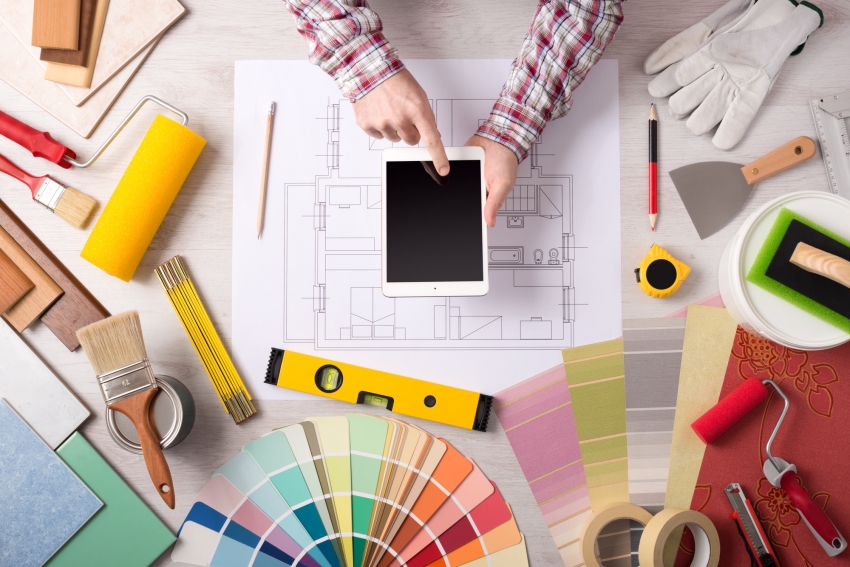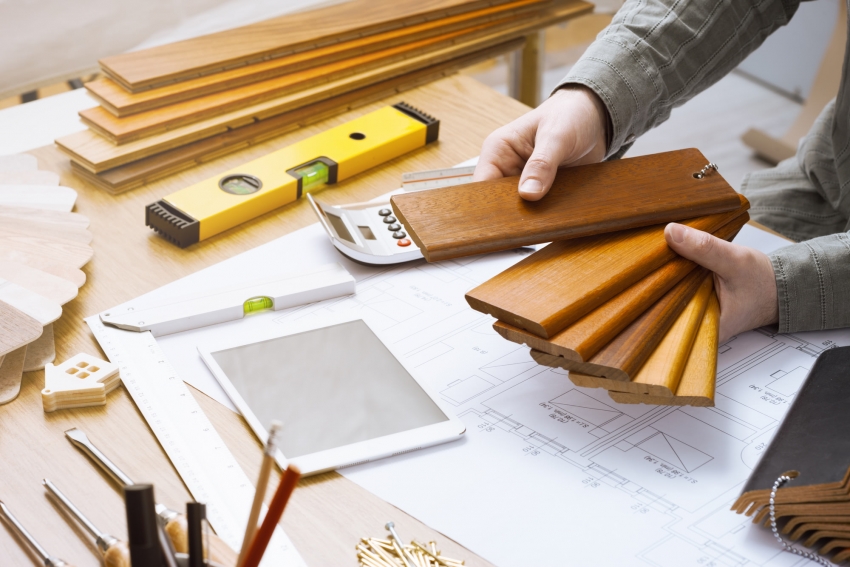If you have a passion for art, design, and architecture, then a career as an interior designer may be a good fit.
Interior designers are more than just decorators; they are an integral part of the designing, planning, and construction of new homes and other spaces.
If you are going to be an interior designer, you will need a formal education.
You will also need to deal with certification and any required licenses.
This article will give an in-depth view of what education you need to become an interior designer, what licenses you need, and what kind of certifications you require.
Steps to Becoming an Interior Designer
Here is a quick step-by-step guide on how to become an interior designer.
Step 1: Get a Degree
The first thing to do is to get an education in interior design. Most employment opportunities require candidates to have a bachelor’s degree but educational programs exist at the associate’s bachelor’s, and master’s level.
Step 2: Receive Certification (Optional)
The next step after graduating from your program is to get certified. Certification is not required by any means, but it will make you a more competitive applicant for positions. Those who hold interior design certification are the only ones who can use the title “certified interior designer” or “registered interior designer.”
Step 3: Maintain Certification
If you opt to receive certification you will have to renew every year. Renewal involves sending in proof of completed continuing education credits and any applicable renewal fees.
Interior Designer Education Requirements
Interior design is about more than just being good with decorations.
Interior designers study a broad range of subjects from building codes and architecture to psychology and human behavior. Interior designers must not only know about the mechanics and principles of design but also how space, color, and lighting work to solicit certain emotional reactions from humans. Interior designers are part artist, part manager, and part psychologist, so their education must reflect this broad skill set.
The requirements for being an interior designer are usually a bachelor’s degree, but you can get an associate’s, bachelor’s, or master’s level education in interior design.
Other skills related to construction and design may be helpful, such as blueprint reading or contracting.
Currently, no state has licensure requirements for interior designers, except for Louisiana, Florida, Nevada, and Washington D.C., where you must be registered with the state if you are going to work in any commercial space.
Although you do not need a license to work, most states give interior designers the option to receive voluntary National Council for Interior Design Qualification (NCIDQ) registration or certification. Those that receive NCIDQ certification are the only individuals who can work under the title “certified interior designer” or “registered interior designer.”

Accreditation
The two main accrediting agencies in the US for interior design programs are the Council for Interior Design Accreditation (CIDA) and the National Association of Schools of Art and Design (NASAD).
These two organizations offer accreditation to associate’s, bachelor’s, and master’s level programs. Programs accredited by CIDA are the most likely to prepare one for a career in interior design as CIDA accredits professionally-oriented interior design programs while NASAD provides more general accreditation for art and design schools. Individual programs can also be accredited directly by the US Dept. of Education.
In order to sit for the NCIDQ certification exam, students must graduate from an accepted accredited program. The Council for Higher Education Accreditation has a list of accepted programs and accrediting agencies.
Training Information & Types of Interior Designer Degrees
Education programs for interior design exist at the associate’s, bachelor’s, and master’s degree levels. At the associate’s level, one can pursue an associate of arts (AA) in interior design.
At the bachelor’s one can pursue either a Bachelor of Arts (BA), Bachelor of Science (BS), or Bachelor of Fine Arts (BFA) degree.
Options for graduate students include either a Master of Arts (MA) or Master of Fine Arts (MFA) in interior design.
What You’ll Study
Given the broad, interdisciplinary nature of the field, interior design programs can vary widely in their curriculum, focus, and specialization.
Courses draw from a diverse pool of subjects including math, architecture, construction, fine arts, information technology, and psychology.
Most programs also include some set of professional development and management courses.
Exact course requirements differ depending on the institution and degree level, but you can expect at least a handful of the following course/subtopics in interior design:
- Building Systems: Building construction including lighting, plumbing, power, etc.
- Color Theory: How colors work together and how they affect people psychologically.
- Drawing & Composition: Abstract art course meant to evoke creative expression and teach artistic techniques.
- Drafting/Blueprint Reading: Creating and reading technical documents meant to guide the construction process.
- Elements of Design: Fundamental aspects of the design process such as line, shape, color, and rhythm.
- Interior Design Management: How to manage the implementation of an interior design.
- History of Interior Design: Covers important historical periods of architecture and art.
Most programs will also include classes that cover professional skills needed for the field like common practices between clients and colleagues, business structures, and professional etiquette/ethics. More advanced programs may cover technical topics like computer-assisted design (CAD) and other visualization software.
How Long Does it Take to Become an Interior Designer?
It depends on the program. Most bachelor’s programs take at least 4 years to complete and master’s level programs usually take 2 years to complete.
However, what matters for interior designers isn’t so much education but certification and licensure. States that require licensure most likely require applicants to receive certification by passing a state-approved exam like the NCID. Students may need up to 2 years of work experience to sit for the exam. So the timeline for becoming an interior designer varies greatly and can fall anywhere between 2-5 years.
How Much Does it Cost to Become an Interior Designer?
The average cost for a 2-year associate’s program is $21,000 per year with a total average cost of $42,000. The average out of state tuition cost for a 4-year bachelor’s program in interior design is $38,500 per year with a 4-year total of roughly $154,000. Per-year tuition costs for master’s level programs can vary between $20,000-$100,000.
In general, schools offer discounted tuition to in-state residents. Students must also consider other costs associated with completing a degree, such as housing, food, and the cost of living.
Option 1: Interior Designer Associate’s Degree
The “basic” option for education in interior design is to pursue an associate’s degree. These programs are offered at community, technical, and vocational colleges.
Graduates from an associate’s program are generally qualified for entry-level positions as decorators or interior design consultants. They may also be eligible for certification if they have the requisite work experience.
Associate’s level programs are meant to give students a thorough introduction to the fundamentals of interior design, which includes things like basic design/construction principles, color theory, drawing/composition, and interior design history. These programs tend to be more general and do not delve too deep into specialized niche areas of interior design.
Students will likely get hands-on experience working with modern computer-aided drafting software which has become somewhat standard in the industry.
Most associate of arts programs in interior design require students to complete some original and functional design piece to graduate.
Admission Requirements
Other than a high school diploma/GED, most associate’s level interior design programs don’t have any prerequisites for application. However, students who have experience working with design and art via high school classes or extracurriculars may have a leg up on other applicants. A small minority of programs may require you to send in standardized test scores (SAT or ACT).
Courses
A hypothetical course load for an associate’s degree in interior design might look like:
- Drafting
- Lighting Design
- Color Theory
- History of Interior Design
- Fundamentals of Design
- Computer-aided Design
Most of these courses involve both theoretical instruction and practical application.
Option 2: Interior Designer Bachelor’s Degree
The second option is to pursue a bachelor’s degree in interior design. At the bachelor’s level students can earn either a BA, BS, or BFA in interior design. Bachelor’s level programs cover much of the same ground as associate’s level programs to a greater degree of sophistication and usually involve opportunities for internships and hands-on design studios.
Bachelor’s level programs also delve heavily into design theory and the interplay between visual space and human psychology. They also cover the basic physics and engineering statics needed for the mechanical part of interior design.
Bachelor’s programs may also be offered in tandem with architectural programs. Bachelor’s level students will learn how to create a professional portfolio of work samples to secure a job in the field.
Admission Requirements
Generally, bachelor’s programs require applicants to have at least a high school diploma/GED and fill out an application form which includes high school transcripts, course history, standardized test scores (SAT or ACT) and letters of recommendation from teachers or employers. In most public institutions, in-state applicants are given precedent over non-state residents.
Courses
A hypothetical course load for a bachelor’s level program in interior design might look like:
- Design I & II
- Visual Communication I & II
- Construction I
- Environmental Controls
- Intro to Psychology
- History of Interior Design and Architecture
- Elementary Physics and Statics
Option 3: Interior Designer Master’s Degree
The highest educational level in interior design one can reach is a master’s degree.
Master’s level program can be either an MA or MFA in interior design. Mater’s programs are designed to prepare students to work as researchers, professors, and other leaders in the field of interior design.
Graduates from master’s programs will be qualified to work in architecture, urban design, project management, and facilities planning. Students in master’s programs also tend to take courses in human behavior and environmental psychology to better figure out what designs their clients want.
Master’s programs teach students how to take advantage of the newest developments in technology, sustainability, and psychological research to make environmentally spaces that are conducive to human well-being and productivity.
Many students who pursue master’s degrees in interior design are working professionals who have returned to school for career advancement.
Admission Requirements
Most graduate-level programs in interior design require applicants to hold at least a bachelor’s degree in interior design or a closely related discipline such as architecture.
Applicants will likely have to send in GRE test scores and letters of recommendation from teachers or employers. A handful of programs may require you to submit proof of hours worked in a professional context.
Courses
Curricula for master’s level programs tend to be heavily research and experientially focused. A hypothetical course load might look like:
- Interior Design Seminar
- Design Theory and Criticism
- Research Methods for Interior Design
- Interior Design Materials
- Environmental Psychology
- Graduate Internship
Most graduate-level programs require students to submit original research or designs to receive their degree.

Online Interior Designer Programs
There are several online interior design programs at the associate’s, bachelor’s, and master’s levels. Online programs are a great option for non-traditional students or distance learners as they offer flexible course scheduling.
Advances in digital technology are able to provide online students with a full suite of design tools and many courses in interior design programs are uniquely suited for online instruction. Online programs may also supplement their programs with hands-on practice at nearby institutions and internships.
How to Get Your Interior Designer License
Most states do not require interior designers to register and the handful of states that do only require licensure for working in commercial spaces. Interior designers can choose to receive their voluntary certification. Certification is granted by passing the NCIDQ exam.
Applicants to the exam must show proof of graduating from an accredited interior design program and a certain number of professional hours worked. The NCIDQ exam itself consists of three parts that are meant to give a comprehensive analysis of the profession, practice, and legal standards of the interior design field.
Certification is usually not required to get a job in the field, but employers and clients tend to favor working with interior designers who have their certification. Only those who pass the NCIDQ exam can legally use the title “certified interior designer” or “registered interior designer.”
License Renewal
The CIDQ requires all certificate holders to renew annually. Certificate holders are required to provide proof of completed continuing education credits and a renewal fee. If you wait too long to renew your license, it may be rendered invalid and you’ll have to take the NCIDQ exam and pay any relevant certification fees again.Interior Designer Job Outlook & Growth
Interior designers face great starting salaries and good potential for career growth.
According to the US Bureau of Labor Statistics, the annual median salary for interior designers in 2018 was $53,370 ($25.66/hour).
The top 190% of earners made over $94,130 and the bottom 10% of earners made less than $29,970. Those employed in architectural, engineering, and other related services saw the highest average salaries at $59,670 while those employed in furniture stores saw the lowest average salaries at $45,550.
The field of interior design is expected to grow by 4% from 2018-2028; about the average national growth. Even though only a handful of interior designers are directly employed by the construction industry, most interior designers depend on the construction industry to generate new projects for them.
As America’s currently existing infrastructure continues to degrade, demand for interior designers will increase due to the need to remodel and renovate existing buildings, such as hospitals, homes, commercial spaces, and schools.
As populations become more concentrated in urban areas, interior designers will be needed to figure out the most efficient ways to use space.
Associations, Groups & Resources for Interior Designers
What is an Interior Designer
Interior designers plan, design, and implement the decoration of the inside of buildings. This can be workplaces, private homes, commercial buildings, and any other form of property. If you have a creative-side and love planning and designing continue and learn how to become an interior designer.
The role often involves long and unsociable hours, but most experienced interior designers will tell you the end result is worth the effort. There is a large amount of satisfaction seeing your own visions come to life and this is part of the role.
What Does an Interior Designer Do?
Interior designers decorate, fit out, redesign, and develop the inside of buildings. This often involves meeting with the property owners (clients), discussing their needs and putting together a package with your ideas for the space and how you will execute them.
You need to be up-to-date with the latest in internal design fashion and trends. Have a comprehensive understanding of the different materials available and which are best to use. As well as being able to manage costs and offer the best value.
Designers often do not get involved in the manual labor side of the work. So managing staff, contractors and other tradesmen is a large part of the role. So being able to project manage and communicate well is a key to a successful project.
Many designers will specialize in a particular type of building. There is a big difference between a small personal property and a large office block. Some of the principles are the same, but there are some areas of specialization that are needed for different buildings. As well as different laws and regulations.
The average salary of an interior designer is $53,370.
Key Duties of an Interior Designer:
- Creating innovate and practical designs for building spaces
- Generating new ideas and working with clients to meet their goals
- Working with IT design packages
- Project managing the design process, including managing staff and contractors
- Ensuring tight deadlines are met
Desirable Skills of an Interior Designer
There are a wide range of roles for interior designers. Working on different type of buildings require different skill-sets and approaches. There are however some core skills that make becoming an interior designer a lot easier and will help you in the role.
Being Naturally Creative
You will be taking a blank canvas and making a masterpiece in the eyes of the clients. So the ability to be creative and unique is often a desirable skill that helps keep clients happy with the results.
Good Organization Skills
Interior designers often have to manage other people and materials to strict deadlines. Being organized and able to project manage is a vital skill to bring to the role. Missing deadlines can prove very costly.
Good IT Skills
There aren’t many roles that do not require good IT skills and being an interior designer is no different. Most of the planning phase involves laying out designs on computer software and communicating via email to clients.
Good People Skills
You will rarely secure a deal without speaking with the clients in person. If you’re not responsible for this level of care, you will have to communicate with other team members, suppliers and contractors.
Optional: High School Requirements
Family and Consumer Sciences
At family and consumer class you will be taught some of the basic interior design basics like: money management, sewing and home furnishing. Although you will not be making your own home goods, you should know how they are produced in order to be capable of choosing and providing top quality products to your clients.
Art
Art classes will give you an understanding of basic art techniques and theories. You will also learn about complimentary colors, perspective and lighting, stuff that will be really useful for your career. You will also study in depth art history that will help you understand the styles of various time periods and borrow elements from them when working on a project.
Business and Marketing
The majority of interior designers work as freelancers according to bls.gov. Meaning that they are responsible for advertising, marketing, finding clients communicating with them and keeping them happy. Business classes will teach you how to design business cards, write business letters, communicate professionally with clients and how to create invoices to bill your clients.

